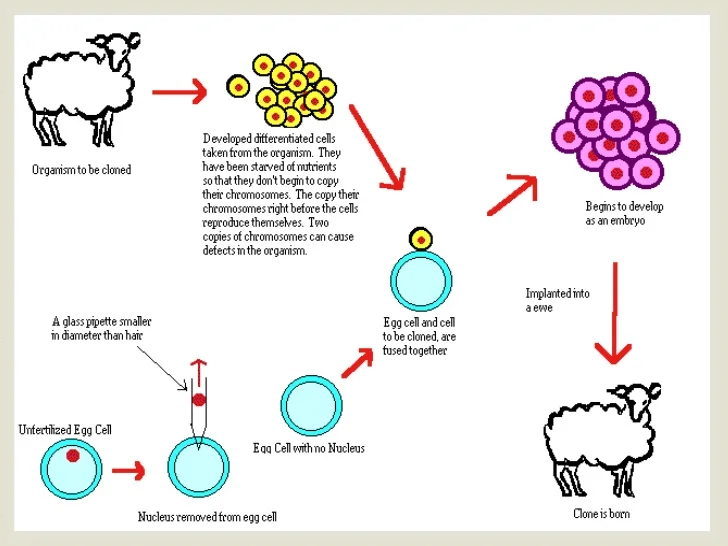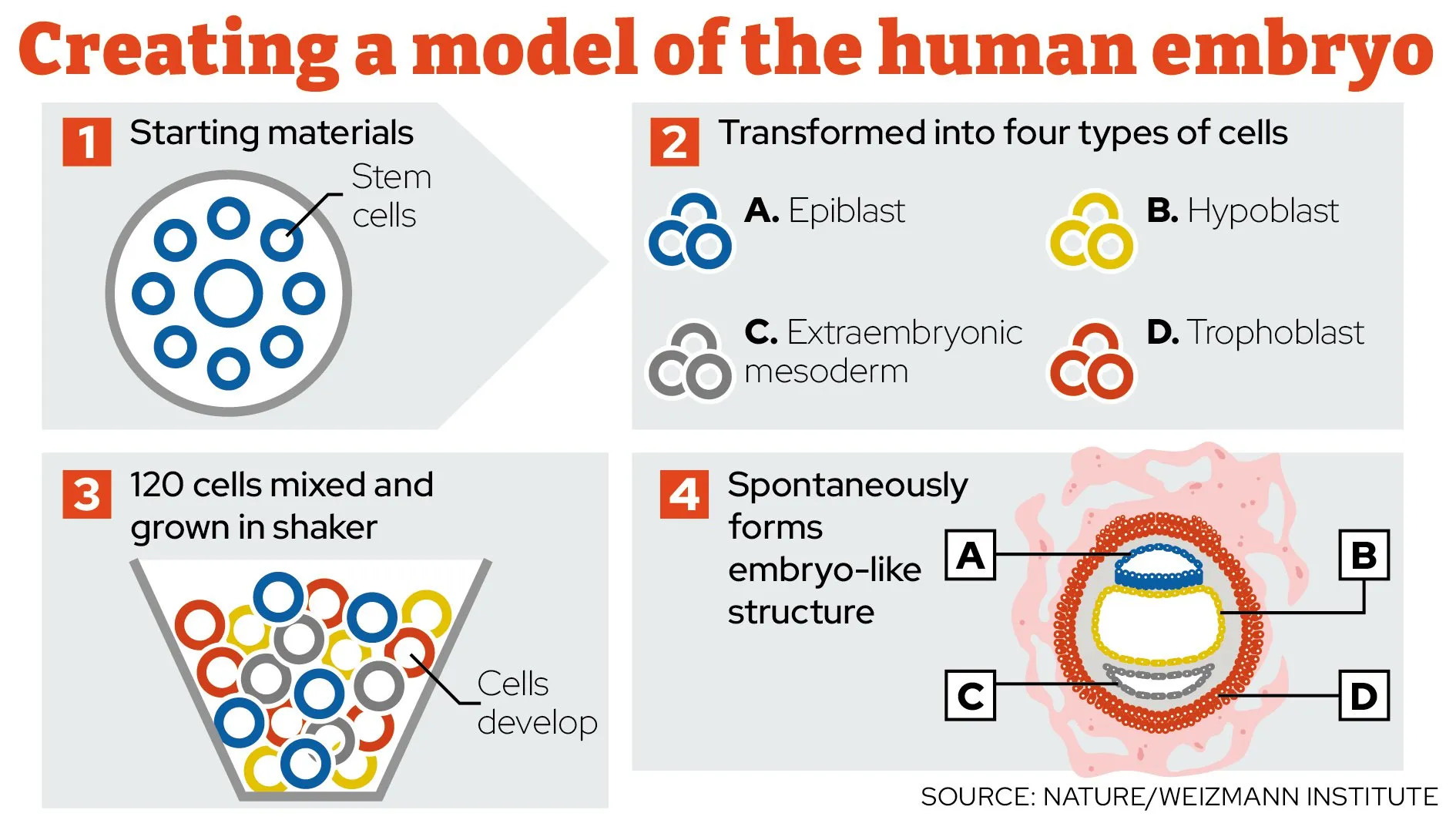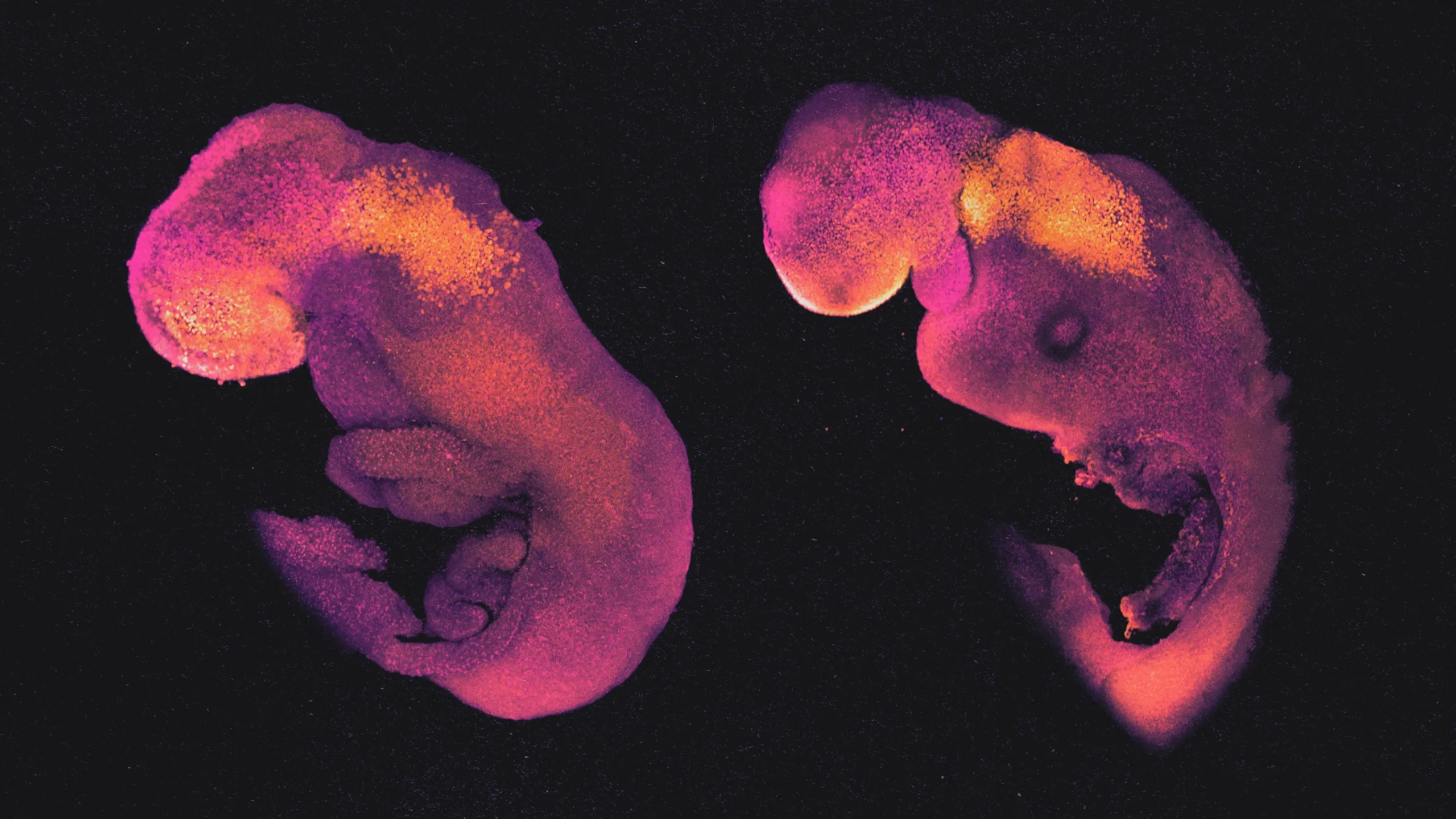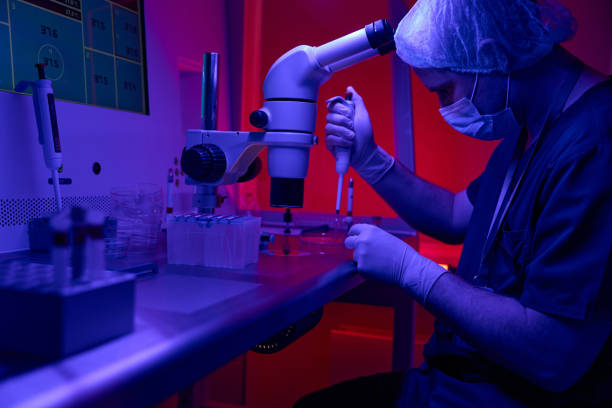By Frangiska Mylona,
-“I got Milky Way for blood, evolution in my vein.”, from Jericho by Iniko
Reproduction and the process of life formation have always intrigued scientists. In our days, the human species have evolved their ways of reproduction from the natural way of intercourse to the birth of Dolly, the adorable sheep that was the first mammal to be cloned from an adult somatic cell to the IVF (in vitro fertilization) method that helped a plethora of couples to bring their offspring into the world till the newest milestone in reproduction which is the formation of a human synthetic embryo.
A synthetic embryo refers to a fetus that is formed without the involvement of sperm, eggs, or even a womb. Although not identical to human embryos, they share some resemblances. The first synthetic embryos were mice or monkeys, however, Professor Magdalena Żernicka-Goetz at the University of Cambridge and the California Institute of Technology announced the formation of human synthetic embryos. Scientists that engage in this project, state that this discovery will deepen their knowledge regarding the events of the first moments in the development of an embryo by developing a more ethical research method that does not require the, previously used, IVF embryos.

Since embryo research is legally and ethically frantic, instead of using a sperm and an egg to produce the embryo, naive stem cells are used. Simply put, naive stem cells can replicate in any tissue possible in the human body. This advantage with some chemical stimulation after mixing the stem cells in a precise ratio, will lead to the formation of four types of cells that are also found in an early human embryo. These include 1) Epiblast cells that will develop into the fetus. 2) Trophoblast cells that will develop into the placenta. 3) Hypoblast cells that will develop into the yolk sac. 4) Extra-embryonic mesoderm cells. Out of these, 120 of them will get mixed up and will form the synthetic embryo.

It is claimed that this discovery will lead to an even better understanding of the genetic background and of the series of events that occur during early fertilization and fetus development. More specifically genetic mutations that can occur during these stages will get to be analyzed with further scrutiny. Furthermore, synthetic embryos may pave the path for the evolution of IVF techniques. Additionally, the knowledge regarding organ formation could be expanded. A bold thought involves organ formation to be used for transplantation.
Another thoughtful idea could involve the delivery of offspring not only for couples that are unable to conceive due to medical issues but also for homosexual partners that desire a baby of their genetic material, without the use of donors’ gametes. The legal frame regarding this type of research is limited to the 14th day of development. There is an ethical question about whether the research should be continued after the 14th day. On the 14th day of gestation, the gastrulation process begins which signals the formation of primitive features of the future body structure. The main defense argument for allowing the research programs after the 14th day of development is based on the fact that these embryos are synthetic and not identically similar to the natural human embryos. It is even suggested to change the time threshold from the 14th day till the moment when certain organs will be formed. A big portion of the scientific community seems very positive and desires strongly to move further than the 14th day. Regarding on whether human synthetic embryos should be implanted in a woman’s uterus, a major portion of scientists state that it would be unethical or even impossible to manage a successful pregnancy.
In China, scientists dared to implant monkey synthetic embryos into a female monkey’s womb, however, the pregnancy failed. This topic raises ethical questions in addition to medical and scientific concerns. The ability to recreate something like a human embryo is considered by some to be an attempt to mimic God. However, in some circles, this statement is compared with the ability of modern medicine, to revive sick patients and extend their lifespan, although it may seem like interference with the “plans of God”, no one is complaining since they can enjoy their love for a little longer. Another question involves if this discovery will lead to the end of natural reproduction but maybe all of these claims might be unhelpful and unpleasantly negative ruining any positive outcome and scaring unnecessarily.

The real question should involve the level of strictness over-regulation, morality, and the force of laws over such concepts. Regarding the moral component of this case, it is crucial to rethink the timeline that these experiments need to cease; the 14th day which signals the beginning of gastrulation. Gastrulation involves the development of the organs and systems that can keep the embryo alive. Therefore, from the 14th day and after, this new organism is considered by some as a new entity. For example, in some synthetic mice embryos, a beating heart along with a developing brain was observed.
In light of this correlation, the ethical aspect of harvesting the organs of these embryos for transplantation is questioned. Additionally, other queries arise on whether it is advisable to experiment with them for other procedures or manipulate them for further study of mutagenic mechanisms. Also, there is a discussion on whether these embryos should be given the same legal and ethical protection as the natural ones, or if should they be sacrificed for the sake of humanity and science, since they are not identical to real human embryos. Furthermore, one should think about what will happen if this promising method “falls” into the wrong hands and gets used to destroy instead of helping.
Maintaining a skeptical attitude toward such an exciting experiment should be advised. However, the medical field never ceases to impress and help people by innovating new ways to improve health and quality of life. It can only be beneficial to develop new fruitful and promising procedures for them to be used in a right and ethical way. In conclusion, one needs to try to keep a positive attitude about this matter without failing to demand strong regulation and monitoring, so that it would be most likely in the future to provide more benefit than harm without trespassing on the legal rights of any of the organisms used.
References
- Scientists grow a whole model of a human embryo without sperm or egg. Available here
- Synthetic human embryo raises ethical questions. Available here
- “Embryo Models” Challenge Legal Ethical and Biological Concepts. Available here
- What are “synthetic embryos” and why do scientists make them? Available here




